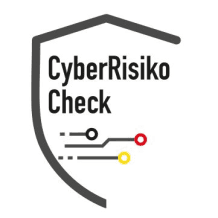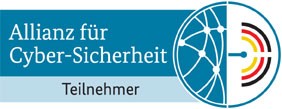Introduction: Why SIEM Optimization is Essential for Modern Security Strategies
In an era where cyberattacks and security breaches are becoming increasingly sophisticated, the continuous optimization of Security Information and Event Management (SIEM) plays a crucial role. With the growing complexity of IT infrastructures, companies must continually adjust their security solutions to proactively detect and combat threats. SIEM Optimization provides the ability to enhance both the efficiency and effectiveness of security measures, ensuring that companies are always a step ahead.
What is SIEM Optimization and what objectives are pursued?
SIEM Optimization refers to the targeted improvement of the processes, technologies, and strategies employed to collect, analyze, and respond to security-related events in a network. The following core objectives are at the forefront:
• Improvement of threat detection times
• Reduction of false alarms through intelligent filtering and correlation of log data
• Efficient resource utilization and automation of routine tasks
• Integration of new data sources for a more comprehensive security picture
• Continuous adaptation to changing threat landscapes
The foundation for successful optimization lies in analyzing existing processes. By gathering current data and identifying weaknesses, targeted measures for improvement can be taken. This encompasses both the technical infrastructure and the organizational security processes within a company.
Why is SIEM Optimization a crucial competitive factor?
In times of digital transformation, data security is a key success factor. Companies that can continuously optimize their SIEM solutions benefit from the following advantages:
Proactive threat detection: By employing the latest algorithms and analytical methods, novel attacks can also be detected early. This enables a swift response, minimizing potential damage in advance.
Efficiency increase: Automated analysis and alerting functions reduce manual effort, allowing security teams to focus on more complex issues. This leads to better resource utilization and increases overall efficiency in the security department.
Scalability: Given the ever-growing amount of data and an increasing number of endpoints, it is essential that SIEM solutions are scalable. An optimized SIEM architecture ensures that high performance and reliability are maintained even under increased load.
How does the optimization process unfold? Practical steps and best practices.
The optimization process of a SIEM solution is multifaceted and can be divided into several phases:
A. Evaluation and analysis of the current situation
Initially, a stocktaking of the existing systems and processes is carried out. All data sources, alerting systems, and integrations with other security solutions should be documented. A detailed analysis of log data, alerts, and response times to security incidents forms the basis for targeted optimization.
B. Identification of weaknesses and bottlenecks
Based on the current analysis, weaknesses in the system are identified. These may include faulty filter rules, missing integration of important data sources, or inefficient alerting mechanisms. A thorough error diagnosis helps to understand the causes of delays or false alarms.
C. Strategic realignment and measures planning
After identifying weaknesses, the planning of concrete measures follows. This includes both technical adjustments and organizational changes. Commonly recommended measures include:
• Revision and optimization of filter rules to minimize false alarms
• Integration of additional data sources, e.g., from cloud services or IoT devices, to obtain a more comprehensive security picture
• Use of machine learning and artificial intelligence to detect anomalies and automate responses
• Regular training and workshops for IT security personnel to prepare them for current threat scenarios
D. Implementation and continuous monitoring
The actual optimization takes place in this step. After implementing the measures, it is crucial to continuously monitor their impact. Regular evaluation of the improved processes and adjustments to new challenges ensure that the SIEM solution continually meets current requirements.
Case studies and success stories: Practical examples of SIEM Optimization
Numerous companies have already benefited from the advantages of an optimized SIEM solution. Below are some exemplary success stories:
Case Study 1: Optimization in a Financial Institution
A leading financial institution faced the challenge of monitoring thousands of transactions in real-time. By implementing an optimized SIEM solution, the company managed to reduce the number of false alarms by 60% and significantly shorten response times for security-related events. This greatly contributed to enhancing customer security and compliance with regulatory requirements.
Case Study 2: SIEM Optimization in Industry
A large industrial corporation implemented a SIEM solution specifically tailored to the needs of manufacturing plants and industrial control systems. By integrating specific sensors and adjusting filter rules, critical system failures could be detected and prevented early. The investment in an optimized security infrastructure paid off through increased uptime and reduced maintenance costs.
Case Study 3: Challenges and Solutions in Medium-sized Enterprises
Medium-sized companies often do not have the same resources as large corporations. Nevertheless, an optimized SIEM solution is also of great importance here. By using cloud-based SIEM services and modularizing the security infrastructure, a medium-sized service provider was able to manage its security alerts more effectively while simultaneously reducing operating costs. The use of automation tools helped to make the best use of limited human resources.
W-Questions surrounding SIEM Optimization
To address frequently asked questions and uncertainties, here are some important W-Questions answered:
What are the advantages of an optimized SIEM solution?
The main advantages lie in faster detection and resolution of security incidents, a reduction in false alarms, and a more efficient use of IT resources. Furthermore, the use of advanced technologies such as machine learning makes the entire security architecture future-proof.
How is a SIEM solution optimized?
The optimization process begins with a thorough current analysis, followed by the identification of weaknesses. Based on this, targeted measures such as adjusting filter rules, integrating new data sources, and utilizing automated analysis systems are implemented. Continuous monitoring and regular evaluations ensure the success of the optimization measures.
What technical challenges arise in SIEM Optimization?
Technical challenges include the processing of large amounts of data, the need for real-time analysis, and the integration of heterogeneous data sources. Furthermore, SIEM solutions must be designed to remain scalable under constantly increasing demands.
Why is the use of AI in the SIEM solution important?
Artificial intelligence, especially machine learning, allows for quicker recognition of anomalies in data traffic and identification of overlooked patterns. This enables even novel attack methods to be detected early and appropriate countermeasures to be automated.
What role does ongoing education of security personnel play?
Technology and the threat landscape are constantly evolving. Regular training and further education are therefore essential to equip security personnel with the latest techniques and strategies necessary for effective use and optimization of the SIEM solution.
Best Practices and Future Outlook: Where is SIEM Optimization Heading?
The evolution of SIEM technology knows no standstill. In light of digital transformation, the following developments are considered particularly forward-looking:
• Integration of Big Data: By incorporating large and diverse data sets, anomalies can be identified even more precisely. This simultaneously requires powerful analytical platforms capable of delivering valuable insights in a short time.
• Cloud-based SIEM solutions: More and more companies are shifting their IT infrastructures to the cloud. Cloud-based SIEM solutions allow for more flexible scaling and offer the advantage of continuous updates.
SIEM Optimization in Germany: Current Developments
The importance of SIEM Optimization in Germany is continuously increasing. According to current studies by the Federal Office for Information Security (BSI), German companies are increasingly affected by cyber threats. The Bitkom Association reports that 84% of German companies have fallen victim to cyberattacks in the last two years.
Particularly in the area of SIEM Optimization, the following trends are evident:
Increased investments in preventive security measures
Greater awareness of holistic security concepts
Integration of SIEM Optimization into existing compliance frameworks
EU Compliance and SIEM Optimization
With the introduction of the NIS2 directive and tightened GDPR requirements, German companies must adapt their security strategies. SIEM Optimization plays a central role in fulfilling regulatory requirements.
Important compliance aspects:
Documentation of security measures
Regular review and update
Proof of effectiveness to regulatory authorities
Practical Implementation in Corporate Daily Life
The integration of SIEM Optimization into everyday business requires a structured approach. Experience shows that companies benefit from a phased implementation that considers both technical and organizational aspects.
Think of SIEM Optimization as insurance for your business: the better prepared you are, the lower the risk of damage from security incidents.
Additional Security Measures
For a comprehensive security strategy, you should combine SIEM Optimization with other security measures:
Vulnerability Management - Systematic vulnerability management
Penetration Testing - Comprehensive security tests
Security Hardening - Employee awareness training
Incident Response Plan - Preparation for security incidents
Conclusion and Next Steps
SIEM Optimization is an essential building block of modern cybersecurity. Investing in professional SIEM Optimization measures pays off in the long run by increasing security and compliance adherence.
Want to optimize your security strategy? Our experts are happy to advise you on implementing SIEM Optimization and other security measures. Contact us for a non-binding initial consultation.
🔒 Act now: Have our experts evaluate your current security situation.
📞 Request a consultation: Schedule a free initial consultation for SIEM Optimization.
📋 Compliance Check: Review your current compliance situation.
📌 Related Topics: Cybersecurity, IT Security, Compliance Management, Risk Assessment




